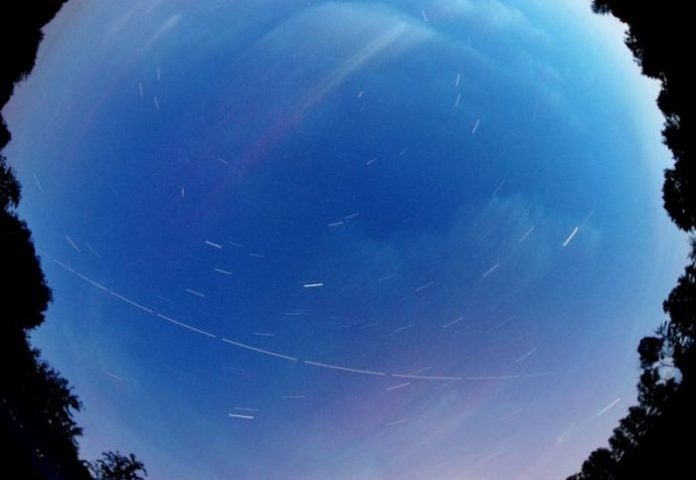On May 30, 2020, the SpaceX Demo-2 mission of NASA launched successfully. It’s the first U.S human spaceflight from U.S. soil because 2011 – to an American rocket and spacecraft – with astronauts Robert Behnken and Douglas Hurley, headed to the International Space Station. Image via NASA.
If you’re seeking information about the SpaceX Crew Dragon launching on Saturday, May 30, 2020… click here.
The International Space Station (ISS) was orbiting our planet since 1998. From places on Earth, presuming you have you can view ISS yourself. On Earth to us, it looks like a star moving from horizon to horizon. It disappears as suddenly as it seems. How do you know when to see ISS pass overhead from your location?
NASA has a fantastic instrument to help – the Spot that the Station program lets you sign up to get alerts to let you know when ISS will be visible from your location – anywhere in the world. Plus there is a map-based feature to track as you fly over in your night skies, when to start looking for the channel.
You could even subscribe to alerts via email or text message. Alerts are sent out a few times each month when the orbit of the station is near your location. Visit with the Spot that the Station website to sign up, and see a list of upcoming opportunities that are sighting.
Wayne Boyd shared his photograph of ISS passing over Marstons Mills
Patricia Evans in Seabrook, New Hampshire, caught this ISS flyover through clouds on June 9, 2016.
Notices will be delivered to you when ISS will be clearly visible in the place for a couple of moments if you sign up to get NASA’s Spot the Station service. If you live north of 51.6 degrees latitude (for example, in Alaska), you will probably have to go to the website to find sighting chances because notifications in this area would be rare.
The notices include information on where to search for ISS. Just note where the sun sets and you may easily find the direction where the channel will appear (for example, in the southwest or in the northwest). The height at is given in degrees. Just remember that 90 degrees is directly on your head. Any number less than 90 degrees will mean that the channel will appear somewhere between the horizon and the 90 degree mark. The channel is so bright it’s actually tough to miss if you are looking in the correct direction. You can stretch your fist out at arm’s length toward the horizon, and that is equal to approximately 10 degrees. Then, just use the appropriate number of fist-lengths to find the location marker, e.g., four fist-lengths from the horizon will be equal to approximately 40 degrees.
The Spot the Station program of NASA is great. I have seen the channel fly many times and it is a fairly amazing experience.
The first module of ISS was launched into space in 1998 and also the initial construction of the channel took to finish. Since that moment, ISS has been continuously occupied. ISS functions as both an orbiting laboratory and a interface for global spacecraft. The primary partnering countries involved in operating ISS include Japan, Canada, the USA, many European countries and Russia.
ISS orbits at roughly 220 miles (350 kilometers ) above the Earth and it travels at an average speed of 17,227 kilometers (27,724 kilometers ) per hour. ISS makes multiple orbits.
Image via NASA.
Image via NASA.
ISS crossing the skies in a long-exposure photograph by Antonin Husek.
Appreciating EarthSky? Subscribe to our free newsletter today!
– Advertisement –
